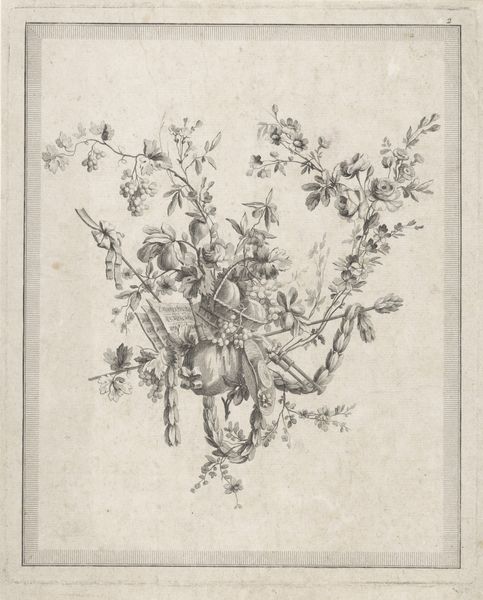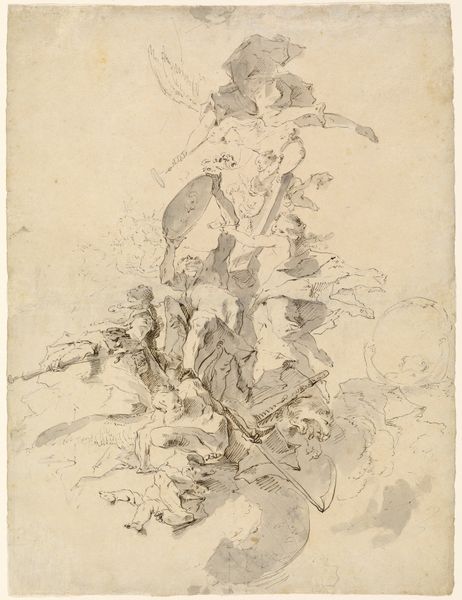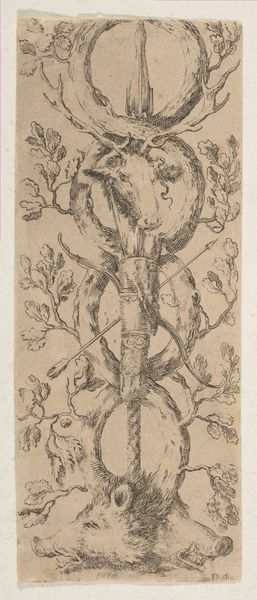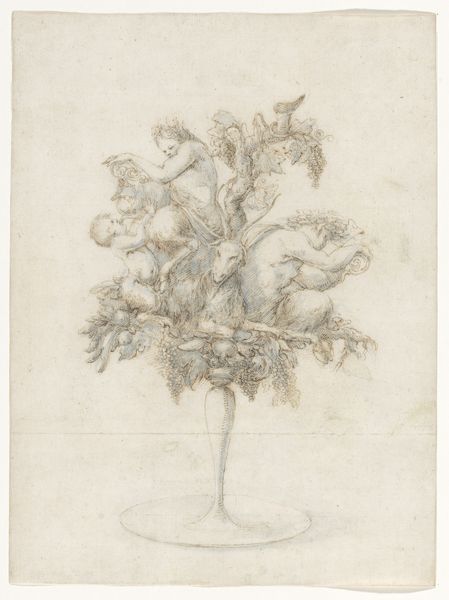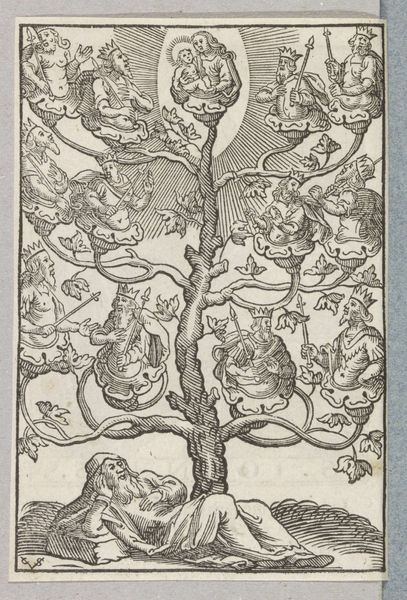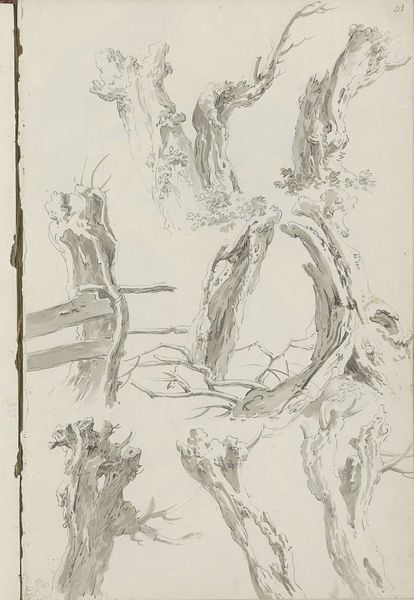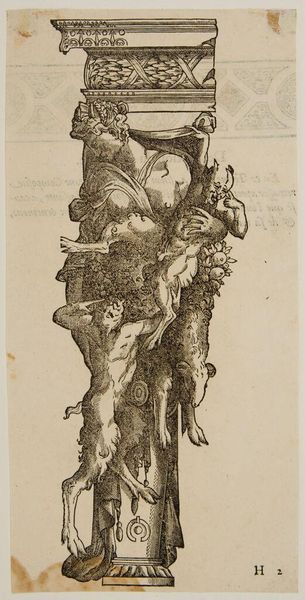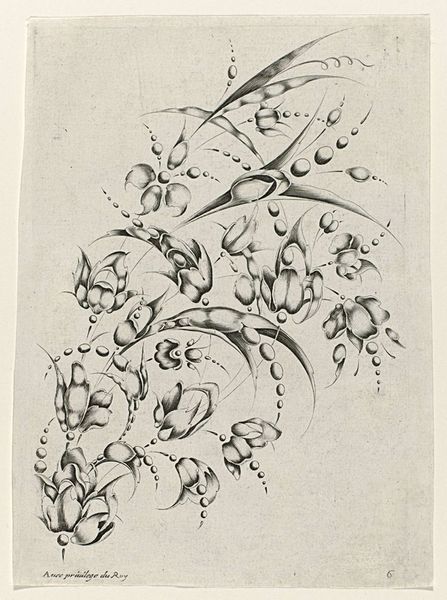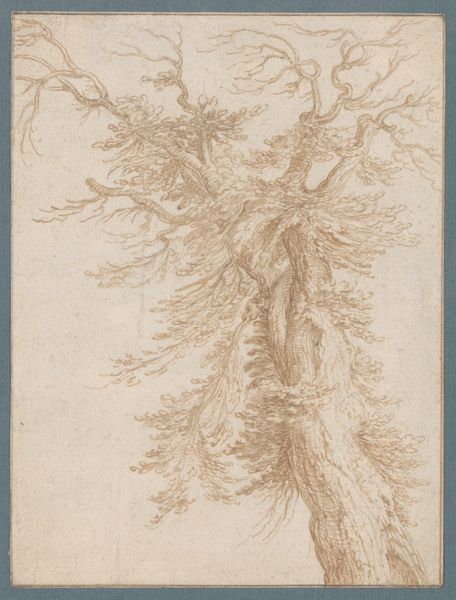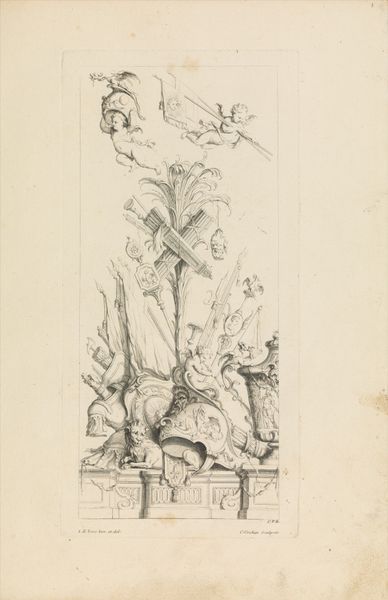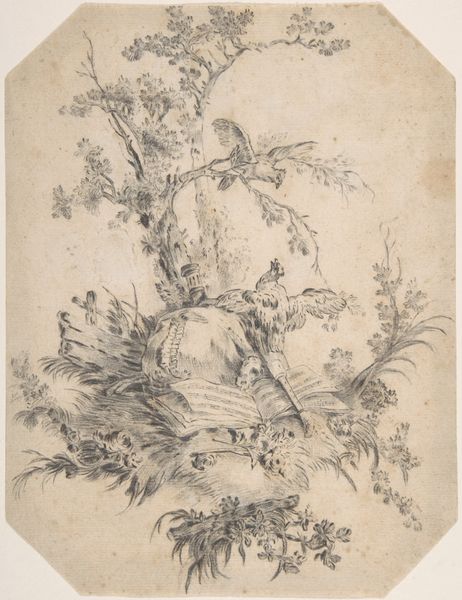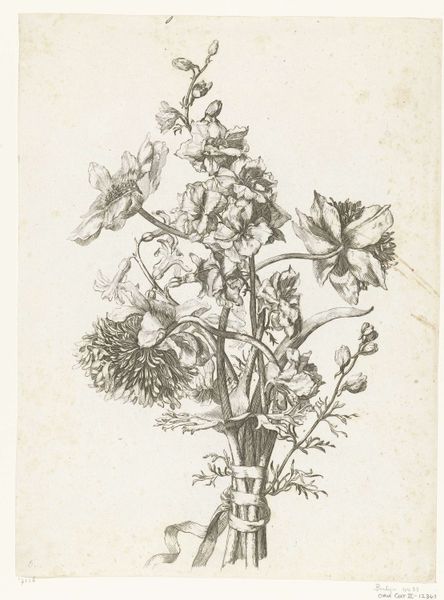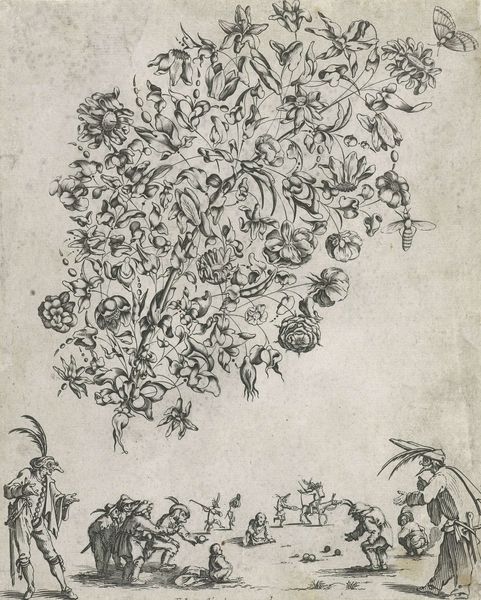
Ornamental Design with Caryatid Figure Standing on Stool and Holding a Bowl; Puttis on the Sides Hold Drapery and Support Base with an Eagle; on the Right Side Decorative Figures with Acanthus surmounted by Flowing. 1762 - 1844
0:00
0:00
drawing, print, etching, ink
#
drawing
#
neoclacissism
#
ink painting
# print
#
etching
#
classical-realism
#
etching
#
figuration
#
ink
#
history-painting
#
academic-art
Dimensions: 9-11/16 x 6 in. (24.6 x 15.2 cm)
Copyright: Public Domain
Editor: This is Giuseppe Bernardino Bison's "Ornamental Design with Caryatid Figure," created between 1762 and 1844 using ink, etching, and other printmaking techniques. It’s held at the Metropolitan Museum of Art. It feels like a study for something grander, but with a delicate touch. How do you interpret this work? Curator: I see a fascinating interplay of power and servitude encoded in symbolic form. The caryatid, a female figure functioning as a column, supports a bowl, suggesting both burden and offering. Notice the eagle, a potent symbol of empire and authority, perched above. Editor: So, the eagle and caryatid represent different things here? Curator: Precisely! One is soaring imperial ambition, the other grounded, perhaps even subjugated. Consider also the putti, childlike figures, holding drapery – they add a layer of theatricality, as if unveiling a symbolic drama. Are we looking at aspiration versus reality? The burden of history itself? Editor: That's a really interesting point. I hadn't considered the putti as unveiling something symbolic. The entire structure feels precarious, like these concepts are in tension. Curator: And the tension is deliberate. Neoclassicism, while drawing from antiquity, also grapples with the weight of history and power dynamics. The symbolism here is carefully chosen, creating a visual language of aspiration and constraint, victory and sacrifice. Bison is speaking to the complex inheritance of Western culture. What does the vessel suggest to you? Editor: Now that I see those symbols you pointed out, the vessel brings to mind sacrifice, like maybe offering up the constraints the caryatid statue is subject to, for power and victory. Curator: Precisely. The whole structure invites us to unpack centuries of inherited symbols, and how those symbols continue to influence cultural memory. Thank you for your perspective, I can apply this in my cultural studies class.
Comments
No comments
Be the first to comment and join the conversation on the ultimate creative platform.
